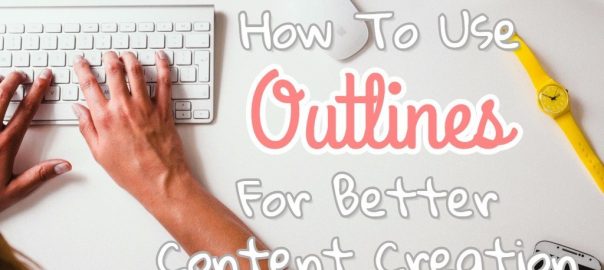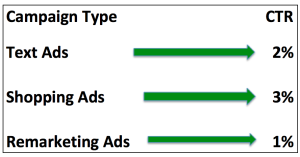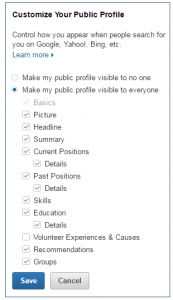
If you’re looking for a great way to speed up content creation, one of the best tips is to create outlines. I’ve used outlines since I started my career in journalism, and I’m not the only one to use them to improve the process of getting a piece of writing from idea to publication. Many professional writers do the same, whether they’re crafting blog posts, feature articles or other content.
Benefits Of Using Outlines For Content Creation
Why use outlines? There are many advantages, most of them relating to organization. Without an outline, it’s harder to connect ideas correctly. For example, you might write a piece of content and only realize you’ve forgotten something essential after publication. With an outline, you can identify potential gaps before you start writing so that you can make a piece of writing as complete as possible.
Using outlines means you don’t have to write all your content yourself, even if you’re the person who comes up with the original idea. Because of this, outlines work well if you’re part of a content creation team or if you work with freelancers. That’s because you can create an outline that covers the points you think are essential, giving the writer a guide to the shape of the final piece.
Outlines are a great antidote to writer’s block, too. Even if a piece of content isn’t fully fleshed out, having an outline to start with frees writers from the fear of the blank page.
And, of course, having a plan, which is basically what an outline is, helps you to write faster. If you know where you’re going with a piece of content, you can just write it. That doesn’t mean you can’t move things around later, but it certainly helps the process of getting that content completed.
There’s one last benefit of outlines, especially for those creating lots of interconnected content. If you’ve got an outline for each piece, you can see at a glance which pieces of content complement each other and can identify opportunities for linking. That’s why outlining several pieces of content at once is a valuable part of any content strategy.
You can use outlines for any piece of content you create, whether it’s a video script, blog post, infographic or something else. After all, it’s always wise to know what you’re planning to include before you start creating the content.
Outlines come in different shapes and sizes. Some outlines are loose, with only a few pointers to guide content creators; others are more detailed, and there are even a few which are almost as long as the final piece of content. Whichever kind of outline you plan to create, the basic process is the same.
Brainstorming Your Content Outline
The starting point for creating any outline is the brainstorming phase. This is where you establish what your basic idea is, and consider everything that needs to be included. For example, you could start with a title on your content calendar, like the title of this post, then work out what people are likely to want to know.
You can also use a tool like Answer the Public to see what people have asked on the topic you’re planning to write about. Quora is another useful source of that kind of information, as is Reddit. One advantage of this approach is that if you are covering common questions in your content, it’s likely to improve the search ranking of the final content piece.

There are lots of ways of capturing brainstorming inspiration. Some people keep it simple. They just write everything down on a piece of paper and arrange it later. Some go a step further and use mindmapping, either offline or online. Or they simply capture everything in a Word or Google document. One tool I’ve used for outlining in the past is WorkFlowy (Ed.: also check Dynalist), which I like because it’s list based, allows indentation (useful for creating sub-topics) and has drag and drop. Here’s an example of a basic Workflowy outline:

How To Create An Outline
By the end of the brainstorming phase, you’ll probably have a good idea what your final topic will be and what the main areas are that you have to cover. Then it’s time to start your outline in earnest by writing down broad sub-topics that relate to your topic, and then adding any ideas that relate to those sub-topics in the appropriate place in your outline. Check back to make sure you’ve included everything essential from the brainstorming phase.
The broad outline with a few sub-topics is often enough to get the job done, especially if the content creator knows the niche well. But sometimes, you’re going to need a bit more.
For example, I wrote a white paper for a client who had specific ideas about what needed to be included based on his knowledge of the target market, so the outline he provided was very detailed.
If you need a more detailed outline for the content, then add more levels to your outline, such as sub-sub-topics. Again, WorkFlowy is ideal for this, though you can achieve the same effect in any document.
What To Include In Your Outline
These days, content creation is not just a matter of writing about the topic. It’s also important to do some research and back up any assertions with data. So to make your outline even more useful, make a note of details, examples and links in the relevant parts of your outline.
I find it useful to include quotes that strike me as important, too. I usually include the name of the source article and the link so I can grab those details easily later. The more you put in the outline, the less time you’ll have to spend going back and forth between your sources and your content at the writing stage.
If you’re trying to optimize content around particular keyword phrases and semantic phrases then it’s a good idea to include those at the appropriate point in your outline.
With a great outline you should be able to write the piece without having to go and redo any of the research. You can also note down any ideas you have for illustration the content, like charts, graphs and photos, within the outline.
Once the body of the content is arranged to your satisfaction, it’s time to think about the title, intro and conclusion. The title and intro entice the reader; the conclusion is the payoff. All are essential components of a good piece of writing.
If you haven’t already got a title, search for your topic on Buzzsumo to see what’s popular. That can help you formulate a new title that’s likely to attract attention. You can also test it with the CoSchedule Headline Analyzer or the CoSchedule Social Message Optimizer. The higher the score, the more appealing your content.

Write an intro to your piece to lay out the direction you intend to take. Read it back and see if it sounds interesting. Though you don’t have to write out the conclusion, you should know where you’re going. That will help you craft a piece of content to lead to that conclusion.
Once, you’ve finished your outline, assess it. Ask yourself whether the structure is logical, whether the piece makes sense and whether anything is missing. If you’re not happy, tweak the outline again. Ensure that related ideas are grouped together and take out anything that’s repetitive or unnecessary.
Example: Creating An Outline
Here’s how I approached the outline for a recent piece for Search Engine People on evergreen content.
The initial outline looked like this:
- What is evergreen content?
- How long should it be?
- How to create evergreen content?
As you can see, this was pretty basic. Once I’d done some research, I fleshed it out, coming up with this list of sub-topics:
- Define Evergreen Content
- What’s Not Evergreen Content
- Key Hallmarks Of Evergreen Content
- Evergreen Content Inspiration
- How Long Should Evergreen Content Be?
- xx Steps To Creating Evergreen Content
My working outline included the main point from each paragraph under the headings, as well as links to research and image suggestions. By the time I’d finished writing out the piece, I’d decided on the number of steps to be included and also added some examples. Here’s what the final piece looked like.
What Type Of Outline Do You Need?
So, when you decide whether to use a short, detailed or extended outline. All content creators have to make their own decision. As a veteran writer, here’s my approach:
- If I’m an expert in the topic, a loose outline is more than enough to guide me.
- If I know the topic reasonably well but want to make sure that I include additional research, then I’ll do a slightly more filled in outline.
- And if I’m planning to hand off the writing to someone else, then I’ll do a very detailed outline indeed.
Other Ways To Use Outlines
It’s also worth mentioning that there’s another use for outlines in your content strategy: if you’re using guest posting. The best way to get someone to publish your guest post is to make a pitch that shows you know what their audience will like. This usually includes:
- A killer title
- An intro
- A brief outline
- Where necessary, some of the important sources you plan to use.
Finally, an outline is also a handy way to check that you’ve included everything you intended when you’ve finished creating the content. Don’t worry if the final piece isn’t identical; just make sure you haven’t left out anything important.
As a professional writer, I consider outlines a key content creation tool, helping me to do my job better. How do you use outlines when creating content?
* Adapted lead image: Public Domain, pixabay.com via getstencil.com
The post How To Use Outlines For Better Content Creation appeared first on Search Engine People Blog.
Search Engine People Blog(196)
Report Post







